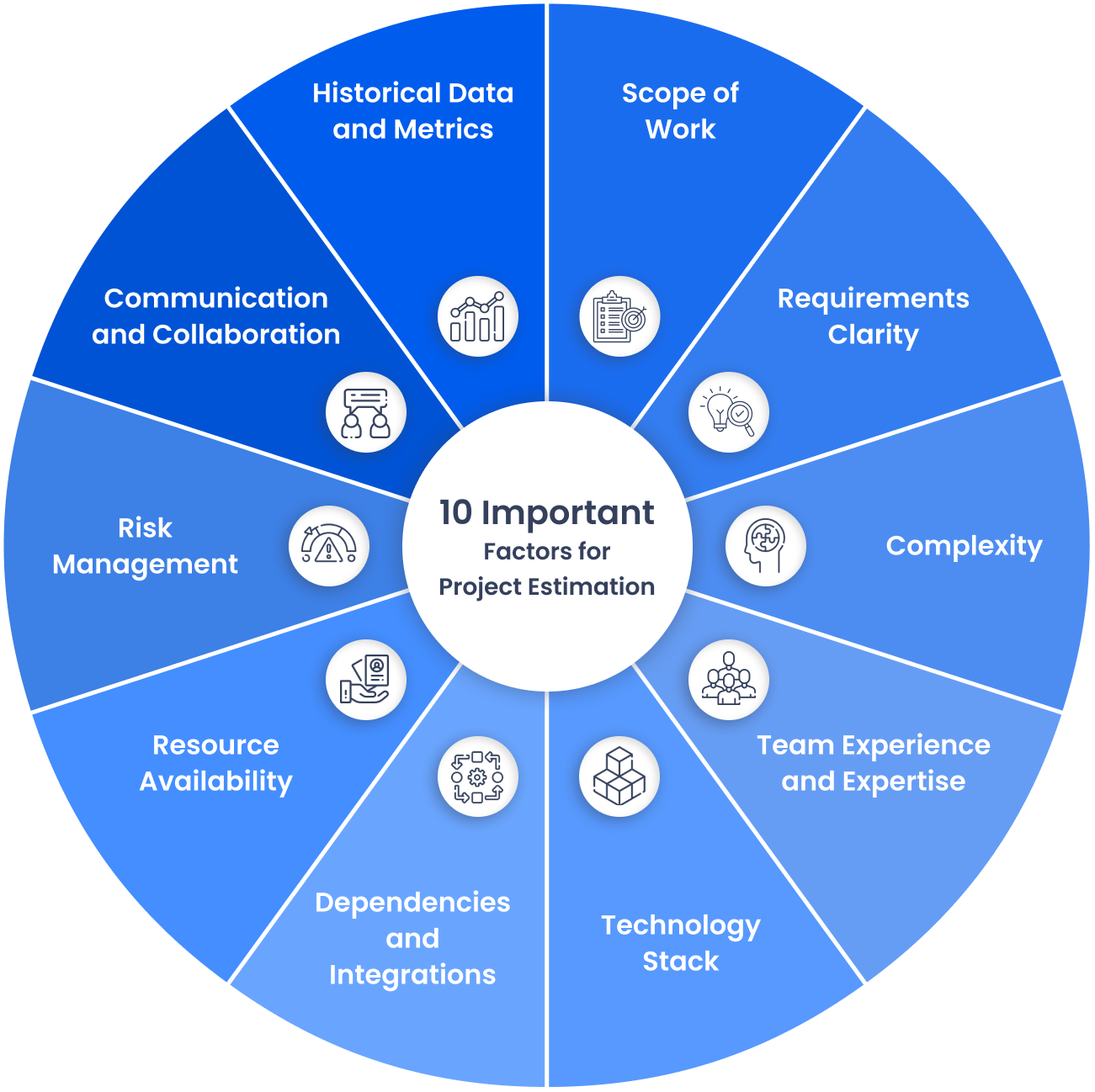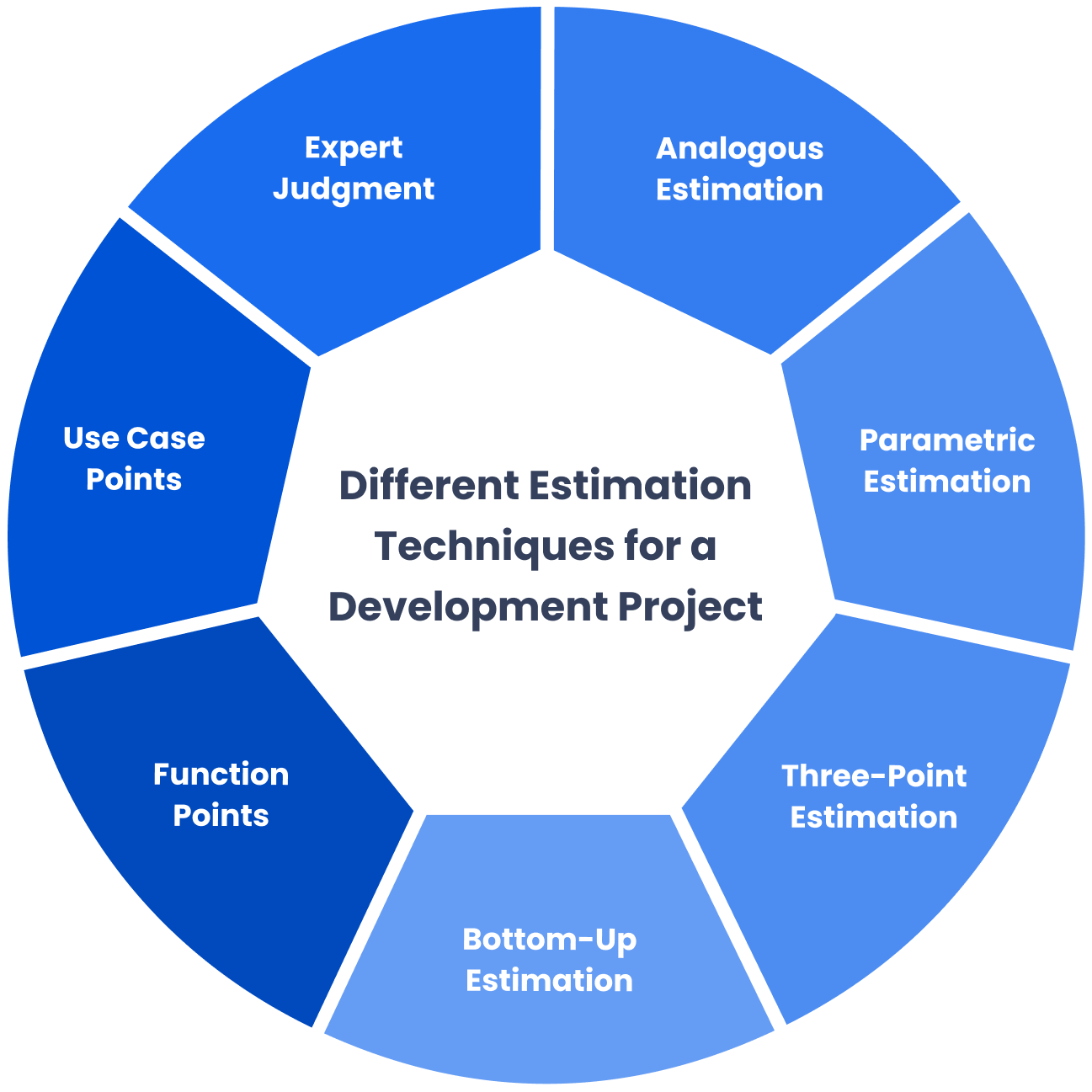
What is Estimation in Software Development?
Why is it Important to Give A Software Development Estimation?
- Estimation helps in setting realistic expectations for clients, stakeholders, and team members.
- It assists in resource allocation, budgeting, and project planning.
- Accurate estimations contribute to better decision-making and risk management.
- Estimation provides a baseline for measuring project progress and performance.
10 Important Factors for Software Development Project Estimation

1. Scope of Work
2. Requirements Clarity
3. Complexity
4. Team Experience and Expertise
5. Technology Stack
6. Dependencies and Integrations
7. Resource Availability
8. Risk Management
9. Communication and Collaboration
10. Historical Data and Metrics
Genuine Estimation, Underestimation, Overestimation, and Their Impacts
- Tasks – the details of what should be done
- Resources – the human efforts, number of experts
- Rate – the ratio of cost to time
- Duration – the length of production in hours or days
- Third party services – in case of additional services that might not involve the software vendor directly.
Without accurate estimates, it’s impossible to plan your project. If you don’t have an idea of how long the project will take or what resources you will need, there is no way to ensure you’ll have the right people, materials, or tools available when you need them.
Different Estimation Techniques for A Development Project

-
Expert Judgment
Involves gathering input from experienced team members or industry experts to estimate project parameters.
-
Analogous Estimation
Relies on historical data from similar projects to estimate the current project's effort and duration.
-
Parametric Estimation
Utilizes mathematical models based on project parameters to estimate time and resources.
-
Three-Point Estimation
Involves estimating best-case, worst-case, and most likely scenarios to calculate a weighted average.
-
Bottom-Up Estimation
Breaks down the project into smaller tasks and estimates each task individually, then aggregates the estimates to obtain the overall project estimate.
-
Function Points
This technique involves estimating the project size based on the functionality provided by the software. Function points consider factors such as inputs, outputs, inquiries, and files to arrive at the project size estimate.
-
Use Case Points
This technique involves estimating the project size based on the number of use cases that the software must support. Use case points consider factors such as the complexity of each use case, the number of actors involved, and the number of use cases.
Conclusion
Shivani Kaniya